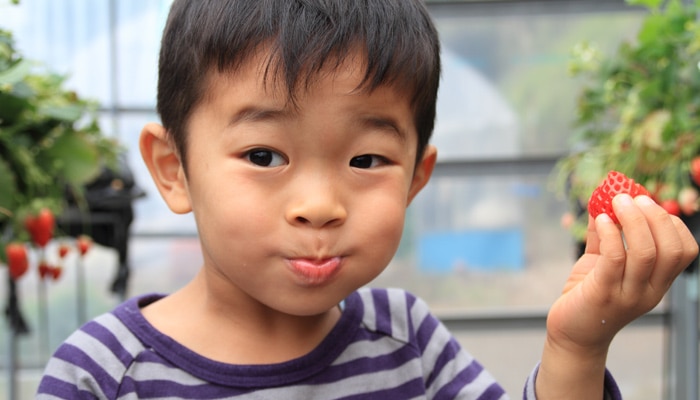While we believe that the books and resources recommended may be of value to you, keep in mind that these are suggestions only and you must do your own due diligence to determine whether the materials are appropriate and suitable for your use. PNC has no sponsorship or endorsement agreement with the authors or publishers of the materials listed.
FARM TO PRESCHOOL

Seeds in Our Foods
Children will observe fruit seeds.

Lesson Objective
Children will learn the differences between the number of seeds inside different fruits.
Science
What You'll Need
- A variety of fruits with seeds, such as apples, tomatoes, green peppers, oranges, strawberries, cucumbers, lemons, watermelons, avocados (one of each fruit for study, and several of each fruit for tasting)
- Cutting board
- Cutting knife – teacher use only
- Plastic cups or containers, labeled with pictures and names of fruits – 1 per fruit
- Paper plates – 1 per child
- Magnifying glasses – 1 per child
- Chart paper – 2 to 3 sheets
- Markers
What To Do
Note: Have children thoroughly wash their hands before beginning this activity.
- Display the fruits, and tell the children that they will be investigating the seeds in fruits.
- Discuss the fact that fruits have seeds inside but vegetables do not.
- Distribute magnifying glasses, and allow the children to examine the fruits.
- Ask the children to predict where the seeds are (see Guiding Student Inquiry).
- Ask children what could be done to find the seeds.
- Before cutting into the fruits, make predictions about which type of fruit has the most seeds. Record your group’s answers on chart paper.
- For each fruit, have children estimate the number of seeds inside. Record their answers on the chart paper.
- Cut the fruit open, and examine the seeds.
- Help the children count the seeds as they place them in the correctly labeled cup. Record the seed count on chart paper.
- Compare the results of counting the seeds with the children’s predictions.
Resources
Home School Resources
Home educators: use these printable lesson PDFs to teach this lesson to your home schoolers. They're available in English and Spanish.
Content Provided By
Common Core State Standards Initiative – These lessons are aligned with the Common Core State Standards ("CCSS"). The CCSS provide a consistent, clear understanding of the concepts and skills children are expected to learn and guide teachers to provide their students with opportunities to gain these important skills and foundational knowledge [1]. Visit the CCSS


